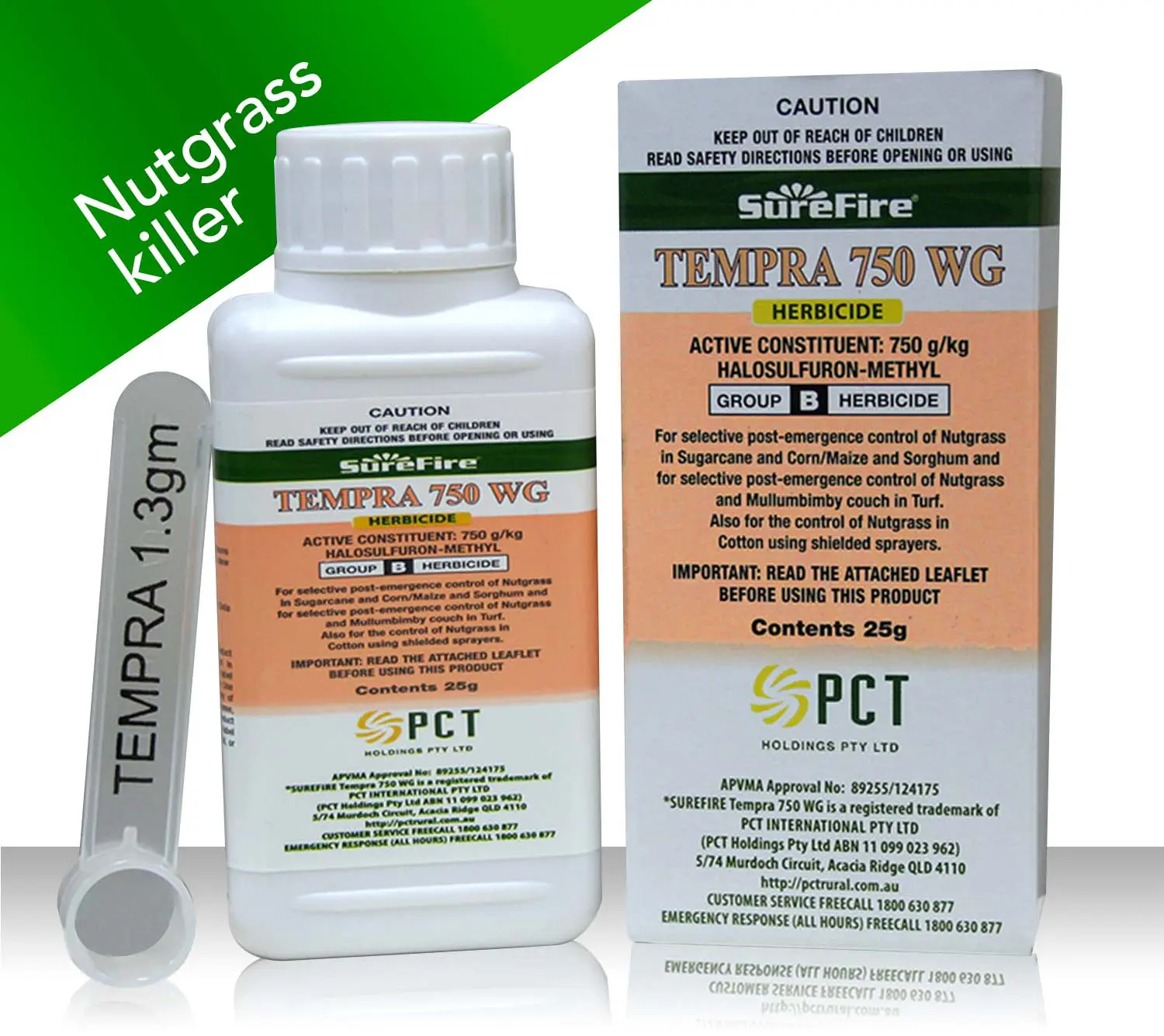Nutgrass, more like not grass. It is after all actually a sedge and while it does have some similarities, it is also very different. Here we discuss some of the differences, why it’s so hard to kill nutgrass, how to make sure you get rid of it and how to reduce the likelihood of it coming back.
What is nutgrass?
Nutgrass (Cyperus rotundus) is a common weed in lawns and gardens. It has lime green, glossy leaves and grows from a tuber, not unlike a potato for those passionate gardeners. While it does have some similarities to grass it does not actually belong to the grass family (Poaceae) instead belonging to the sage family (Cyperaceae).
While many sedges, like Mullumbimby Couch, love wet areas Nut Grass is actually quite tolerant of a range of conditions. It tends to germinate in Spring and Summer and unlike many other lawn weeds, like bindii and clover, it is not annual in nature and continues to persist as long as conditions allow it to. That means it’s not going away any time soon and you need to take action to get rid of it.
How is it different from grass?
Sedges and grasses both grow from a seed and when they do this they have a single emerging shoot (cotyledon), plants that do this are referred to as monocots. They also have veins on their leaves which run parallel to each other never intersecting, this parallel venation only exists in sedges and grasses, but that’s where the similarities end.
Grasses have wide spreading roots, whereas nutgrass has a smaller root system with tubers at the end, these small tubers are sometimes referred to as nuts hence the name nutgrass. Sedges are also easily identified by cutting a cross section of the stem, they are triangular unlike grasses.
Why Nutgrass is hard to kill?
There are several reasons why nutgrass is difficult to kill:
- Nutgrass is not a broadleaf weed and the normal bindii and clover killers won’t work
- Nutgrass has glossy leaves, this means large droplets containing herbicides can roll straight across the leaf and onto the ground, preventing absorption
- Nutgrass can be persist and knows when it’s being attacked, cutting off the top and regrowing from the tuber.
- Herbicides that do control nutgrass come in a wettable granular formulation as opposed the liquid formulations we are used to, that means a little extra mixing
How to Kill Nutgrass- the Right Way
The secrets to killing nutgrass is to overcome some of the obstacles above.
- Get the right herbicide for the job, Tempra is selective in nature, kills nutgrass without harming your lawn.
- Use a surfactant like Wet Out to ensure the product sticks to the leaf and doesn’t roll off. Wet Out works by reducing the surface tension of the spray droplet.
- Re-application will likely be required and is best when the nutgrass has recently emerged and is still small.
- Ensure the wettable granular is properly dissolved and evenly distributed within the tank This can be done by mixing the product in a small amount of water before adding it to the tank or by shaking the tank vigorously.
Preventing Nutgrass from Coming Back
With our product recommendations we like to help you get the best results and reduce the likelihood of having to deal with the problem again. Nutgrass will require repeat applications but we can do something to reduce the spread of the weed and reduce any future infestations.
Nutgrass as you know by now is a sedge and sedges love water so the best way to prevent it from coming back is to reduce the water in the affected area. Sedges being present is generally an indicator that the soil is compacted and wet.
So let’s resolve those problems. This doesn’t mean drying your turf out, it just means ensuring it’s not constantly wet. Start by identifying why this area is becoming wet. Common reasons include:
- Poor water penetration, creating a runoff to this low area
- Shaded areas receiving too much water
- La Nina has been an incredible force in creating in increase in nutgrass prevalence
The ways to resolve this include:
- Aeration of soil
- Use of a wetting agent to increase water penetration
- Improve drainage
Final Thoughts
Hopefully that’s helped and you can jump over to get some Tempra and Wet Out to knock out that nutgrass.
If you’re looking for fantastic advice on any aspect of lawn care then you should follow along on our YouTube channel, LawnFlix where our resident Lawn Genius shows you how to apply, how to calculate and just generally everything lawn related.
Thanks for reading this blog, if you have any questions feel free to reach out to us. Don’t forget to subscribe to our newsletter for well-timed lawn advice, because timing is very important in getting the best results for your lawn.
